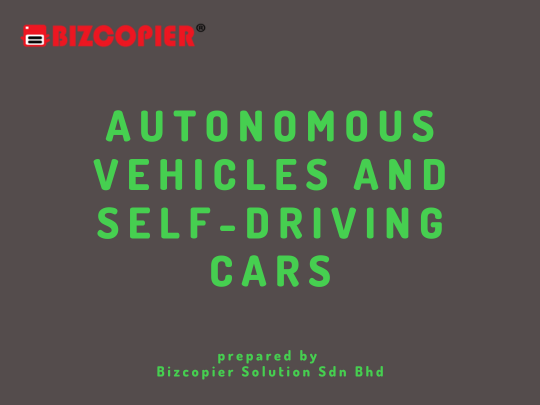Autonomous Vehicles and Self-Driving Cars

Autonomous vehicles, also known as self-driving cars or driverless cars, are vehicles equipped with advanced technologies that allow them to navigate and operate without human intervention. These vehicles use a combination of sensors, machine learning algorithms, and control systems to perceive their environment, make decisions, and safely navigate from one point to another. Here’s a detailed explanation of autonomous vehicles:
Components and Technologies:
Sensors: Autonomous vehicles are equipped with a variety of sensors, including cameras, LiDAR (Light Detection and Ranging), radar, and ultrasonic sensors. These sensors provide a 360-degree view of the vehicle’s surroundings, detecting objects, pedestrians, other vehicles, and road signs.
Perception: The data from sensors is processed by sophisticated perception systems, which identify and classify objects in the vehicle’s environment. Machine learning algorithms analyze the sensor data to make sense of the surroundings.
Mapping and Localization: Autonomous vehicles use highly detailed maps and GPS data to accurately pinpoint their location and navigate routes. These maps include information about lanes, traffic signs, speed limits, and other relevant details.
Decision-Making: The vehicle’s control system uses AI algorithms to make decisions based on the perception data and map information. These algorithms evaluate potential routes, determine safe speeds, anticipate the movements of other road users, and plan appropriate actions.
Control and Actuation: The control system sends commands to the vehicle’s actuators, including the steering, braking, and acceleration systems, to execute the planned actions and maneuvers.
Levels of Automation:
The Society of Automotive Engineers (SAE) defines six levels of automation for self-driving vehicles:
Level 0: No Automation – The human driver is in complete control of the vehicle.
Level 1: Driver Assistance – The vehicle can assist with either steering or acceleration/deceleration, but not both simultaneously.
Level 2: Partial Automation – The vehicle can control both steering and acceleration/deceleration simultaneously in certain conditions, but the driver must remain engaged and attentive.
Level 3: Conditional Automation – The vehicle can perform all driving tasks within specific conditions or environments. The driver can disengage but must be ready to take control when requested by the system.
Level 4: High Automation – The vehicle can operate autonomously in certain conditions and environments without human intervention. Human control may be required only in exceptional situations.
Level 5: Full Automation – The vehicle can perform all driving tasks and functions in all conditions without any human intervention. No driver’s seat or controls are necessary.

*Other Model Available
RICOH MPC3503/ MPC5503 | RICOH MPC3504/ MPC5504
CONTACT US: 03-3341 6296 | 018-788 6296 | 018-228 6296




BIZCOPIER copier purchase Copier Rental klang MPC3503 MPC3504 MPC5503 MPC5504 rental and purchase scheme ricoh copier

Recent Comments